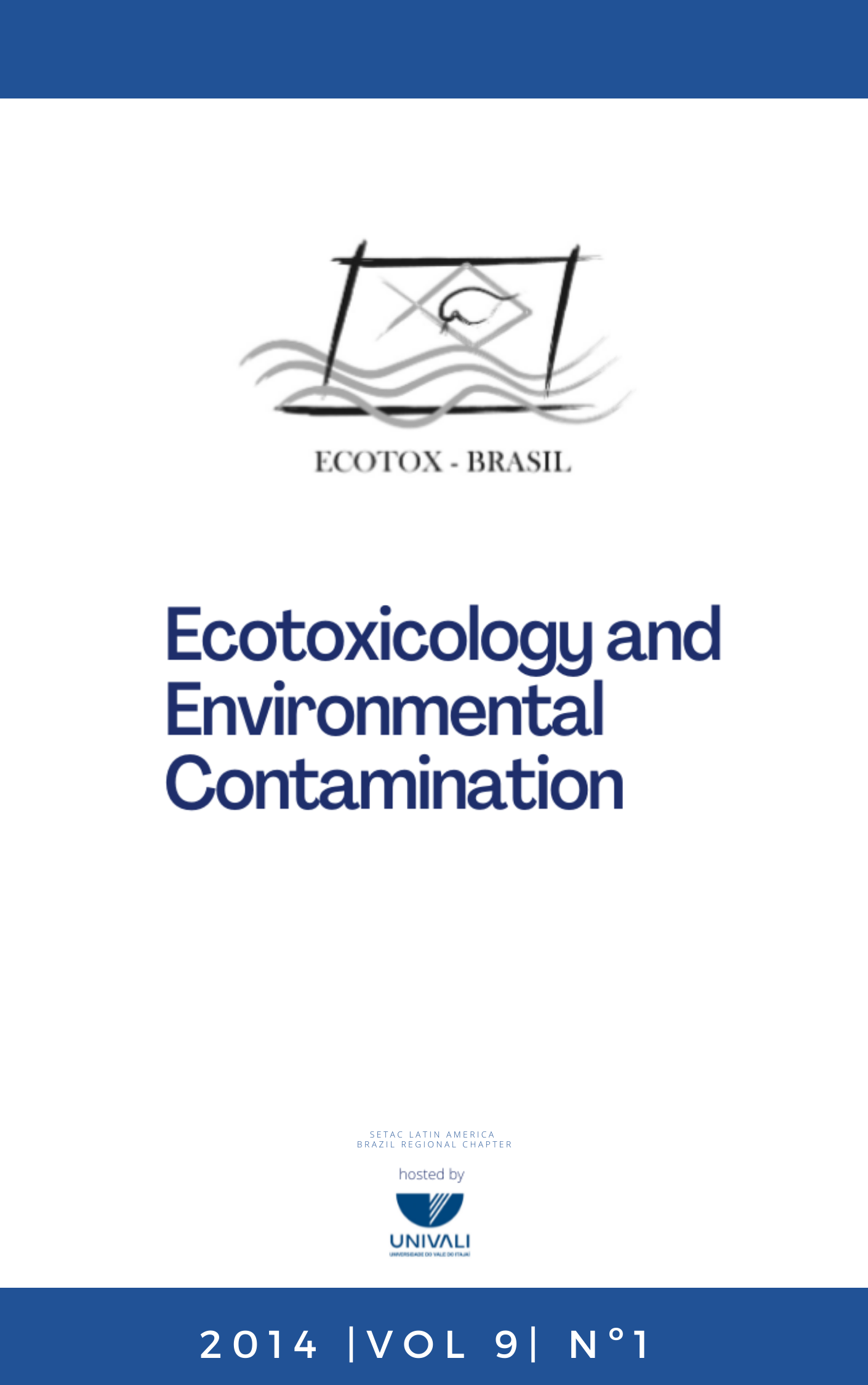Ecotoxicological assessment of irrigation water for vegetables in a watershed region of Greater São Paulo
DOI:
https://doi.org/10.5132/eec.2014.01.003Abstract
The aim of the present study was to evaluate the quality of irrigation water for vegetables in a Greater São Paulo watershed region. Acute and chronic ecotoxicity bioassays with Dugesia tigrina and Selenastrum capricornutum and geno/mutagenicity assays with Allium cepa were performed, as well as microbiological assays for total and thermotolerant coliforms, according to the legislation. The ecotoxicological data did not show significant toxicity in any of the samples. However, surface water genotoxic effect was detected in 2 out of the 3 points and mutagenic effect in all three sampled points, as well as in the sediment, in the Allium cepa test. Such high prevalence of total and thermotolerant coliforms in all samples at the three points indicates a compromised environmental integrity of the basin due to high loads of organic pollution, probably of clandestine origin. No emissions of industrial origin were detected in the region. Thus, taken together, the results suggest that agricultural activity itself may account for the impacts in these water bodies. The present study represents a contribution to the scarce data available in the literature about this important Greater São Paulo region.
Downloads
Published
How to Cite
Issue
Section
License
Copyright © 2006 ECOTOX-Brasil
Copyright notice: It is a condition for publication that manuscripts submitted to this journal have not yet been published and will not be simultaneously submitted or published elsewhere. By submitting a manuscript, the authors agree that copyright for their article is transferred to the Sociedade Brasileira de Ecotoxicologia (ECOTOX-Brasil) if and when the article is accepted for publication. The copyright covers the exclusive rights to reproduce and distribute articles, including reprints, photographic reproductions or any other reproduction of a similar nature, including translations. No part of this publication may be reproduced, stored in a retrieval system or transmitted in any form or by any means, electronic, mechanical, photocopying, recording or otherwise, without permission of the publisher.
Notice: While every effort is made by the EEC, editors and editorial board to see that no inaccurate or misleading data, opinions or statements appear in this journal, they wish to make it clear that the contents of the articles and advertisements published herein are the sole responsibility of the contributors or advertisers concerned. Accordingly, the EEC, the editorial board and editors and their respective employees, officers and agents accept no responsibility or liability whatsoever for the consequences of any inaccurate or misleading data, opinion or statement.




